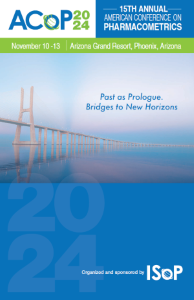Back
Visionary Analytics: Advancing Ophthalmology with historical insights and advanced modeling methodologies
Charting New Paths in Ophthalmology with DeepNLME-Powered Predictive Modeling
Tuesday, November 12, 2024
2:40 PM – 3:00 PM MST
Location: Canyon Ballroom

Niklas Korsbo, Ph.D. (he/him/his)
Senior Product Engineer
DeepPumas, Pumas-AI Inc., SwedenDisclosure(s): No financial relationships to disclose
Speaker(s)
Disclosure(s):
Niklas Korsbo, Ph.D.: No financial relationships to disclose
Large potential gains from understanding and predicting the heterogeneous treatment needs of patients undergoing Anti-vascular endothelial growth factor (aVEGF) treatment for neovascular age-related macular degeneration (nAMD) has prompted a quest for robust and accurate precision medicine. In this study, we introduce the application of DeepNLME (neural-embedded nonlinear mixed effects) for developing semi-mechanistic, semi data-driven longitudinal predictive models for key ophthalmic biomarkers measured in the HARBOR trial, including Best Corrected Visual Acuity (BCVA), Central Foveal Thickness (CFT), Subretinal Hyperreflective Material (SHRM), Pigment Epithelial Detachment (PED), Intraretinal Fluid (IRF), and Subretinal Fluid (SRF). Our findings reveal that the DeepNLME model for BCVA slightly surpasses state-of-the-art models in making individualized longitudinal BCVA predictions based on early observations, showcasing its unique capability to handle inter-subject variability and capture patient-specific trends. Furthermore, we investigate the predictive power of longitudinal biomarkers (CFT, SHRM, PED, IRF, and SRF) on the primary endpoint, BCVA, demonstrating a modest improvement in predictive accuracy (finding a maximal reduction of predictive error by 1.4 ETDRS letters from a baseline of 12.4). This enhancement, although slight, underscores the potential of incorporating multiple ancillary longitudinal biomarkers to refine predictions of key clinical outcomes. The application of DeepNLME not only advances the methodological toolkit available for ophthalmic research but also for pharmacometrics modelling in general. This lays the groundwork for broader applications in healthcare. By effectively integrating mechanistic insights with data-driven identification of diagnostic and prognostic patterns hidden in complex clinical data, our approach promises to contribute significantly to the development of more personalized, effective treatment strategies. The methodology and principles underlying our analysis of the HARBOR trial data are anticipated to have wide applicability, offering a new horizon for predictive modeling across pharmacometrics and beyond.

